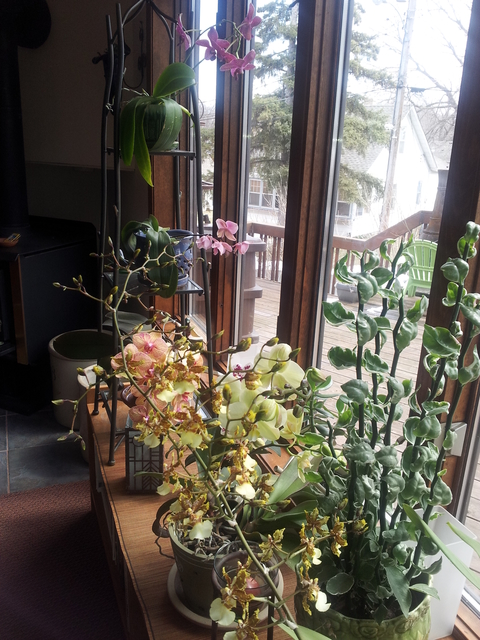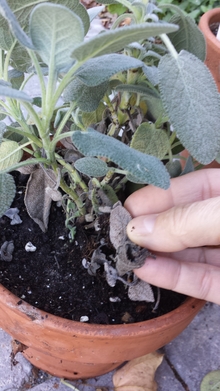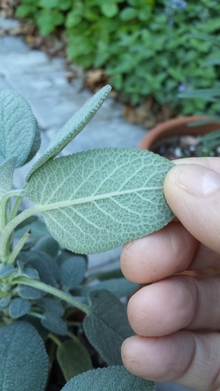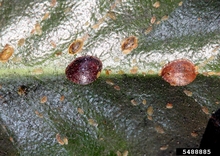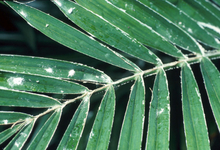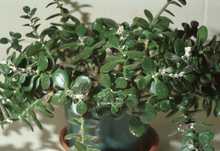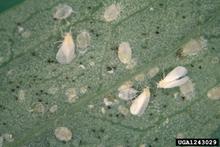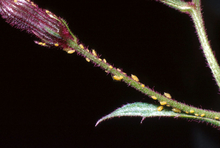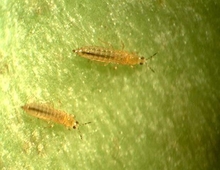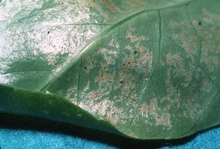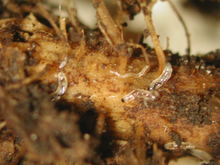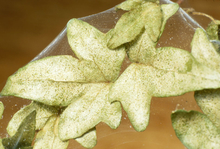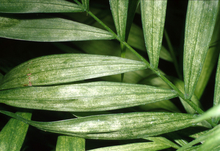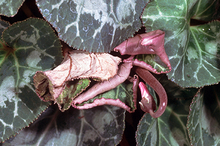Quick facts
- Choose healthy plants with growing requirements that match the indoor environment.
- Proper plant care can minimize pest issues, reducing the need for chemicals.
- Examine plants regularly for insects.
- If pests are detected, isolate the plant from others.
Healthy plants have fewer pest problems
Prevent, or at least minimize, pest issues on indoor plants by choosing the right plants and providing good overall care. Learn about basic care and growing needs for your plant.
Grow plants in the best possible conditions
- Select plants with growing requirements that match the indoor environment (humidity, light, temperature).
- Plants cannot fight off pests when they are struggling to grow in too little light, overly wet or dry soil, too hot or too cold air temperatures, etc.
Water plants properly
- Know how much water your plant needs.
- Water the soil at the base of the plant, not the leaves.
- Be sure the plant's pot drains well.
- Avoid letting plants stand in water.
- Over-watering and poor drainage can cause root rot and encourage fungus gnats as well as other pest issues.
Understand your plant’s nutritional needs
- Apply fertilizer at half the recommended strength.
- Fertilize when the plant is actively growing.
Keep plants clean
- Keep soil surface free of dead leaves, stems and flowers.
- Wash plant leaves with a damp cloth as dust and grime can reduce plant health. Never use leaf shine products or milk.
- Prune out dead branches and stems.
Use new, sterile potting soil when potting plants
- Never pot indoor plants using soil from the garden.
- Avoid using soil from open bags of potting soil that have sat outside for potting indoor plants. Save it for your outside pots.
- Plant in clean pots and wash soil off of plant roots.
Early detection is key to managing pests
Finding pests before they become a problem is the best way to keep insects at bay.
- Thoroughly examine all plant parts and containers before bringing them home from the store or indoors for the winter.
- You may need to use a magnifying lens as some pests are very small.
- Inspect tops and undersides of leaves for insects, webbing, holes and eggs.
- Examine leaves that are discolored as this may be evidence of a pest problem.
- A ten-power hand magnifying lens is helpful when looking for pests. There are also magnifier apps for smartphones.
- Examine leaves that are discolored as this may be evidence of a pest problem.
- Watch for honeydew, a shiny, sticky substance made by aphids, mealybugs and scale insects found on the upper surface of leaves as well as on tabletops and other items around and under the plant.
- Check plant containers for signs of pests along edges, rims, the bottom of pots, saucers, and crevices. Remove if found.
- Isolate newly acquired plants for one to two weeks to allow any possible pest problems to become visible.
- Check for pests when you water, fertilize or clean plants.
- Some insects like springtails and fungus gnats will move due to the water, making it easier to detect them.
- Use yellow or blue sticky traps to detect flying insects like whiteflies, fungus gnats, winged aphids and thrips.
How to manage insects on indoor plants
Many insect problems on indoor plants can be managed using nonchemical methods, particularly if the infestation is minor.
Washing
- Wipe leaves with a damp paper towel, changing towels often to prevent spread.
- Spray small plants in a sink.
- Spray large plants in a shower.
Physically remove pests
- Handpick large pests such as earwigs, caterpillars, slugs and millipedes.
- Small numbers of scale insects can be removed using a fingernail file or something similar.
- Mealybugs can be removed using tweezers or a cotton swab dipped in alcohol.
- Some pests can be removed using a forceful spray of water.
- Repot with new potting soil to eliminate soil-borne pests. Use clean pots and wash soil off plant roots.
Pruning
- Prune if a pest issue is isolated to a few leaves, stems or branches.
- When infestations are more widespread, prune the most severely infested plant parts. This makes it easier to manage pests on the remaining plant.
- In the case of severe infestations and depending on the type of plant, cutting it back may help eliminate pests.
- Watch new growth for signs of infestation.
Throw away or compost plant
- Necessary and economical if the plant is heavily infested and badly damaged.
- Avoids exposing other plants to the same pest problem.
If you still have an insect problem after trying nonchemical methods, consider using a pesticide. There are a limited number of products available for indoor plants. They are sold at plant nurseries, garden centers, building supply stores and online.
They should contain one of the following active ingredients:
Pyrethrins
- No residual activity, must directly spray the insect to kill it.
- Effective against mealybugs, whiteflies, scales, thrips, aphids.
- Repeat applications usually necessary.
Potassium fatty acids (i.e. insecticidal soap)
- Sold specifically as an insecticide.
- Do not mix homemade soap products as this can burn plants.
- No residual activity, must directly spray the insect to kill it.
- Kills insects by smothering.
- Repeat applications usually necessary.
- Effective against scales, aphids, thrips, spider mites, whiteflies.
Plant oil extracts
(canola, clove, sesame, cottonseed, garlic oils)
- Only kills when sprays cover the insects.
- Kills when insects are smothered.
- Repeat applications usually necessary.
- Effective against scales, thrips, aphids, whiteflies, spider mites.
Neem oil
- Disrupts insect growth.
- Short to medium residual activity, lasts days or weeks.
- Repeat applications usually necessary.
- Effective against whiteflies, thrips, aphids.
Bacillus thuringiensis, subspecies israelensis, strain AM 65-52
(e.g. Knock Out Gnats)
- Applied to soil.
- Bacteria that specifically attack fungus gnat larvae.
- Not effective against fungus gnat adults.
- Available primarily online.
Imidacloprid
- Systemic, i.e. taken up and moved throughout the plant.
- Long residual activity, lasts months.
- CAUTION: Toxic to bees; do not use on bee attractive plants that are set outside during the summer.
- Effective against mealybugs, soft scales, aphids, whiteflies.
Precautions:
- Be sure the plant you are treating is listed on the product label.
- If you use a product that requires to be diluted with water, mix only as much as you expect to use in one day. Be sure to use it that day.
- Apply chemicals outdoors whenever possible.
- In cold weather, spray plants indoors in a well-ventilated area.
- To prevent secondary exposure from pesticides, enclose your plant in a plastic bag and seal shut.
- Cut a small hole in the side of the bag and insert your spray nozzle.
- Move the nozzle around to spray your plant thoroughly, especially under the leaves.
- Remove the spray nozzle and quickly cover the hole with duct tape.
- Keep it out of direct sun till dry after treatment.
- Never use any pesticide on a plant that is moisture-stressed. Water the soil a day or two before applying pesticides.
CAUTION: Mention of a pesticide or use of a pesticide label is for educational purposes only. Always follow the pesticide label directions attached to the pesticide container you are using. Remember, the label is the law.
Managing common pests
Appearance
- Adults secrete waxy shell-like coverings.
- Usually brown, gray or white.
- Round, oval or oyster shell-shaped, 1/16 to 1/8 inch in diameter.
- Two types of scales:
- Soft scales are most common, about 1/8 – ¼ inch long. They produce honeydew (a shiny, sticky secretion).
- Armored scales are about 1/16 – 1/8 inch long. They do not produce honeydew.
- Both types of scales produce tiny crawlers that have legs and are mobile.
Damage
Use sucking mouthparts to feed on plant sap.
Heavy feeding causes leaves to yellow and drop, slows growth and stunts plants.
Detection
Watch for discolored leaves.
Watch for honeydew (a shiny, sticky substance).
Examine plant stems and the undersides of leaves, especially along mid-veins, for presence of scales.
Management
Washing.
Physical removal: use a fingernail file or something similar.
Pesticides: horticultural oils, insecticidal soaps, pyrethrins, imidacloprid.
(CAUTION: Imidacloprid is toxic to bees; do not use on bee attractive plants that are set outside during the summer.)
CAUTION: Mention of a pesticide or use of a pesticide label is for educational purposes only. Always follow the pesticide label directions attached to the pesticide container you are using. Remember, the label is the law.
Appearance
- Soft-bodied insects, about 3/16 inch long.
- White, powdery, waxy secretions cover their bodies.
- Have white filaments sticking out along the sides of the body and at the tail end.
Damage
- Use sucking mouthparts to feed on plant sap.
- Heavy feeding yellows leaves, stunts plants and causes plants to wilt.
Detection
- Watch for discolored leaves.
- Watch for honeydew (a shiny, sticky substance).
- Examine plants:
- Along veins on the undersides of leaves.
- At the point where leaves join stems.
- Some mealybugs may also be found below the soil surface on the main stem.
Management
- Washing.
- Physical removal: use tweezers or a cotton swab dipped in alcohol.
- Pesticides: pyrethrins, imidacloprid.
(CAUTION: Imidacloprid is toxic to bees; do not use on bee attractive plants that are set outside during the summer.)
CAUTION: Mention of a pesticide or use of a pesticide label is for educational purposes only. Always follow the pesticide label directions attached to the pesticide container you are using. Remember, the label is the law.
Appearance
- Adults: Very small, about 1/16 inch long, white gnat-like insects.
- Immature: Less than 1/16 inch long; flat, oval, scale-like.
- All stages are normally found on the undersides of leaves.
Plant damage
- All stages feed on plant sap, using their piercing-sucking mouthparts.
- Feeding can cause leaves to yellow and drop and reduce plant vigor.
Detection
- Adults cling to plants and are easily disturbed, fluttering up when you water or handle a plant.
- Difficult to spot the immature insects.
- Use yellow cards to capture flying adults.
Management:
Washing.
Pesticides: insecticidal soap, neem, plant oil extracts, pyrethrins, imidacloprid.
(CAUTION: Imidacloprid is toxic to bees; do not use on bee attractive plants that are set outside during the summer.)
CAUTION: Mention of a pesticide or use of a pesticide label is for educational purposes only. Always follow the pesticide label directions attached to the pesticide container you are using. Remember, the label is the law.
Appearance
- Small, 1/16 - 1/8 inch long.
- Pear-shaped soft-bodies.
- Clearly visible legs and antennae.
- Typically green, but may be other colors as well.
- Typically wingless, although winged adults capable of flight may be present some times.
Damage
- Use sucking mouthparts to feed on plant sap.
- Leaves can yellow and plants can become stunted and distorted.
- Honeydew on leaves that can become black with sooty mold.
Detection
Watch for discolored leaves.
Watch for honeydew (a shiny, sticky substance).
Examine plants for aphids clustered on stems just below flower buds or newly opening leaf buds.
Also check on flowers and the undersides of leaves.
Whitish cast skins may also be seen.
Management
- Washing.
- Physical removal: cotton swab dipped in alcohol; remove using a forceful spray of water.
- Pesticides: pyrethrins, insecticidal soap, neem, plant oil extracts, imidacloprid.
(CAUTION: Imidacloprid is toxic to bees; do not use on bee attractive plants that are set outside during the summer.)
CAUTION: Mention of a pesticide or use of a pesticide label is for educational purposes only. Always follow the pesticide label directions attached to the pesticide container you are using. Remember, the label is the law.
Appearance
- Very small, about 1/16 inch long and slender.
- Usually tan or dark colored.
- Run quickly when disturbed.
- Adults can fly.
Plant damage
Thrips feed by scraping leaves or flowers with their rasping mouthparts, then sucking the fluid that is released.
Damaged leaves develop irregular silvery streaks or splotches.
Flowers become streaked or distorted.
You may see small, shiny drops of excrement on leaves, where feeding is heavy.
Detection
- Watch for discolored leaves and flowers.
- Use yellow or blue sticky cards to capture flying adults.
Management
- Washing.
- Pesticides: pyrethrins, insecticidal soap, neem, plant oil extracts.
CAUTION: Mention of a pesticide or use of a pesticide label is for educational purposes only. Always follow the pesticide label directions attached to the pesticide container you are using. Remember, the label is the law.
Appearance
- Very small, about 1/16 inch long.
- Usually slender white or gray insects.
- Springtails jump when they are disturbed.
Damage
- Springtails are scavengers, feeding on decaying roots and fungi.
- They prefer to live in damp potting soil, especially a mix containing a high percentage of peat.
- They rarely, if ever, damage indoor plants. They are mostly a nuisance.
Detection
- Check the soil.
- Springtails are particularly noticeable right after watering the plant.
Management
- Let surface soil dry as much as possible between waterings, without letting the plants wilt.
- There are no pesticides to treat springtails.
Appearance
- Adults:
- Small, 1/16 - 1/8 inch long.
- Dark-colored with clear wings that are folded behind its back when at rest.
- Larvae:
- Legless, worm-like larvae.
- Have dark head.
Plant damage
- Fungus gnats are scavengers with larvae feeding on decaying roots and fungi in soil.
- They prefer to live in damp potting soil, especially a mix with a high percentage of peat.
- They rarely, if ever, damage indoor plants.
- They are mostly a nuisance.
Detection
- Look for adults on plants or adjacent areas (CAUTION: can be confused with fruit flies or other small-sized flies).
- Use yellow sticky cards to capture adults.
- Place a slice of potato on the soil surface and check periodically for larvae.
Management
- Let surface soil dry as much as possible between waterings, without letting the plants wilt.
- Yellow sticky traps will capture some adult flies. But, traps only help to detect adults and should not be relied on as the only management method.
- Bacillus thuringiensis, subspecies israelensis, strain AM 65-52 (e.g. Knock Out Gnats) applied to the soil. It is only effective against larvae.
- Repot with fresh soil in a clean container after washing soil off the plant roots.
CAUTION: Mention of a pesticide or use of a pesticide label is for educational purposes only. Always follow the pesticide label directions attached to the pesticide container you are using. Remember, the label is the law.
Appearance
- Oval shaped.
- Yellowish or greenish in color.
- 1/50th inch long (magnification is typically required to see them).
- Amber-colored mite eggs, whitish cast skins, and black fecal specks may also be seen.
Damage
- Piercing leaf tissue with needle-like mouthparts, feeding on sap.
- Feeding creates a stippled appearance on the leaves.
- Feeding can also yellow leaves and cause leaf drop.
Detection
- Watch for speckled or mottled discoloration on leaves. Severely infested leaves can look bleached.
- Examine underside of leaves, especially with magnification.
- Tap leaves with a sheet of white paper underneath and watch for tiny moving creatures.
- Watch for presence of fine webbing.
- Spider mites thrive in dry, warm conditions.
Management
- Washing.
- Wash your hands and any tools after working with infested plants to avoid accidentally spreading them on hands, clothing and watering cans.
- Pesticides: insecticidal soap, plant oil extracts.
CAUTION: Mention of a pesticide or use of a pesticide label is for educational purposes only. Always follow the pesticide label directions attached to the pesticide container you are using. Remember, the label is the law.
Appearance
- These mites are extremely small and semi-transparent.
- Impossible to see without high magnification.
Damage
- Inhabit protected portions of plants, especially young tender leaves, buds and flowers.
- Infested leaves are stunted, brittle and often hairy. Flower buds may be deformed and streaked.
- Sometimes injured leaves, buds and flowers may turn black.
- Stems of infested ivy plants are often leafless or have small hairy leaves.
- Damaged African violets typically have small, cupped hairy leaves in their centers.
Detection
Diagnose cyclamen mite problems by the symptoms.
Management
- Throw away infested plants.
- Pesticides and other methods are not practical options.
Reviewed in 2023


